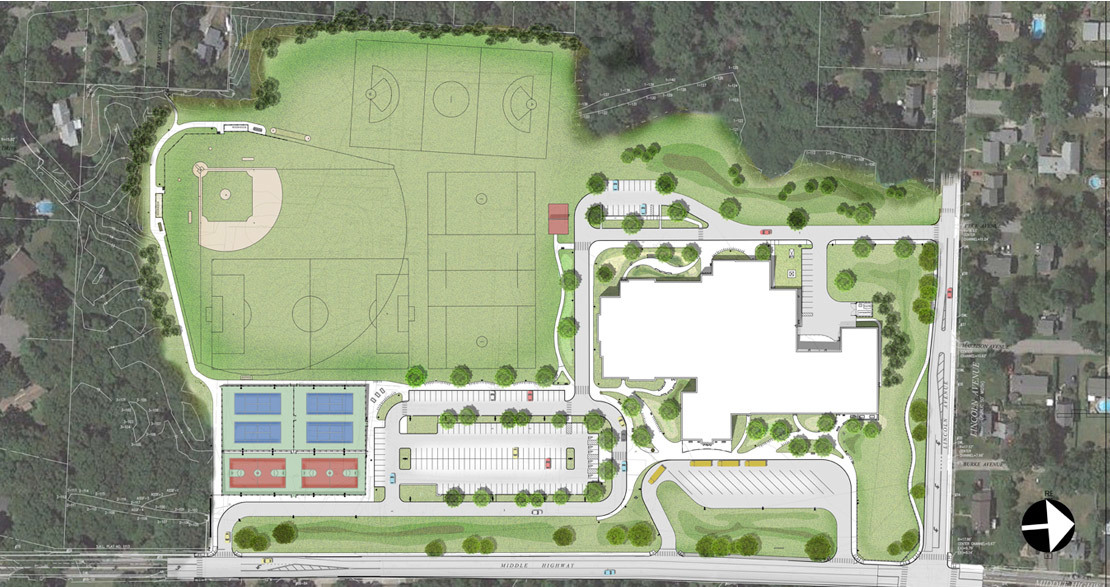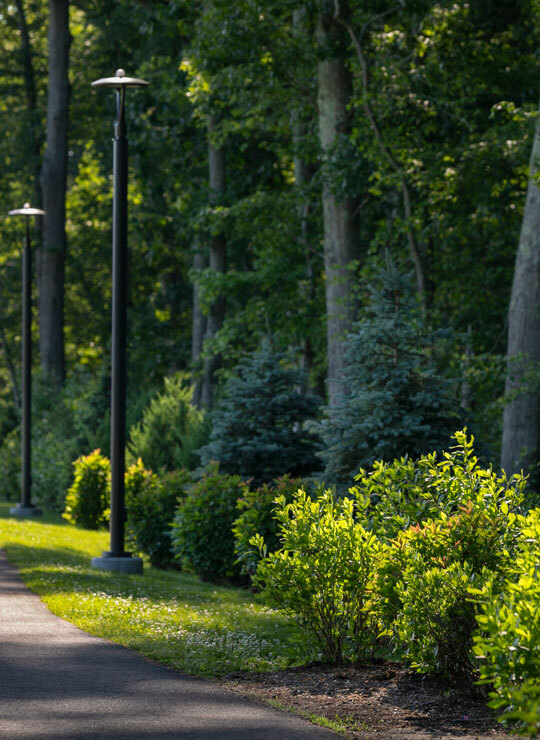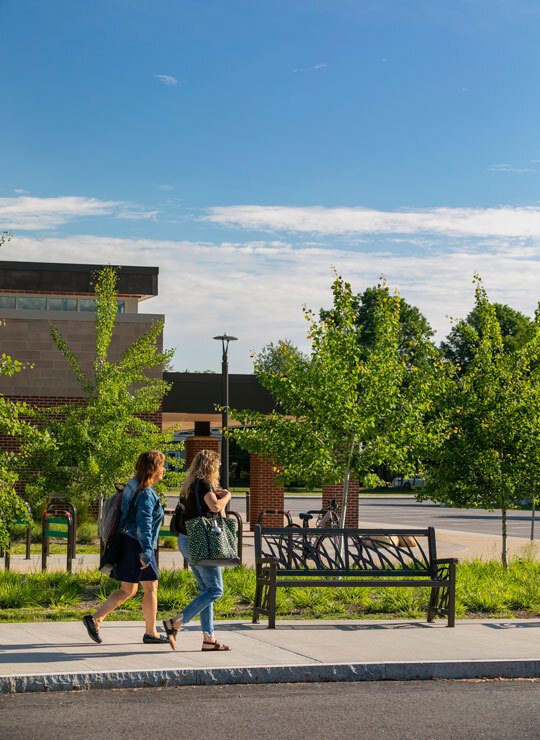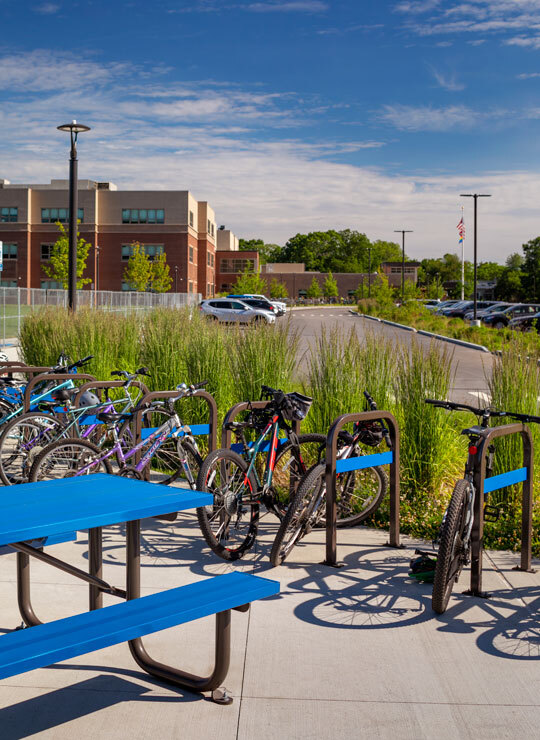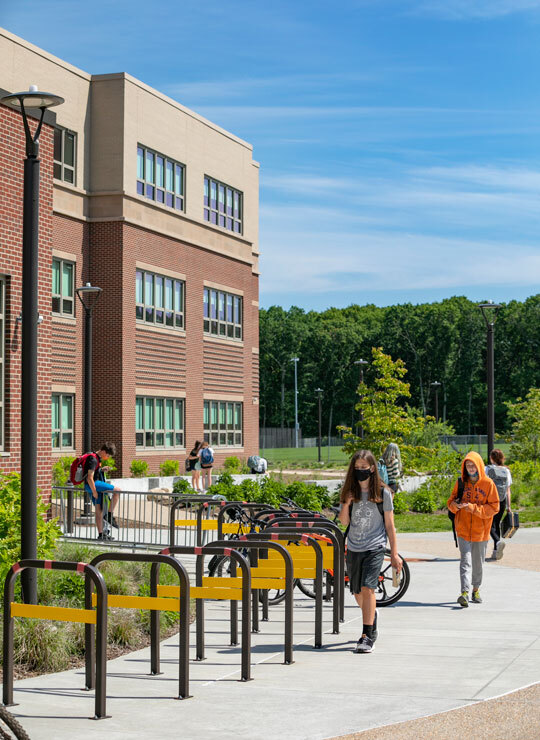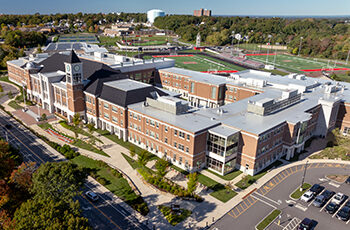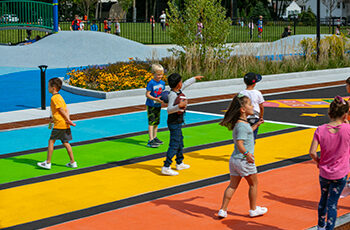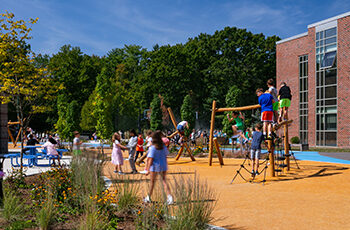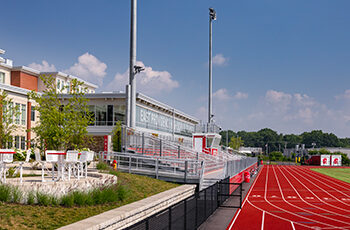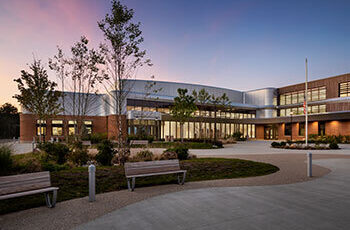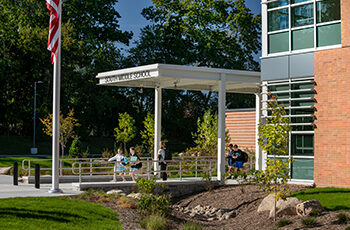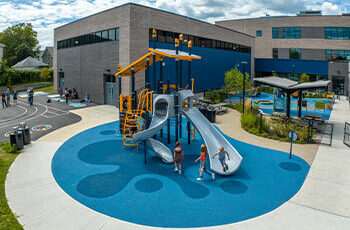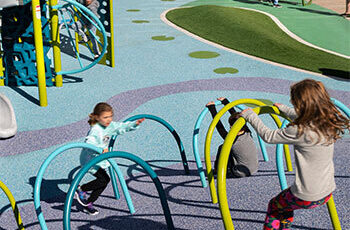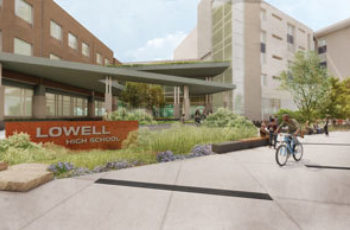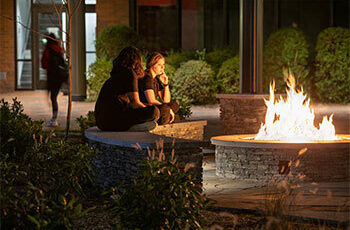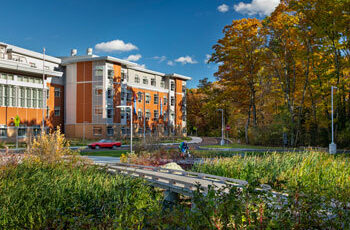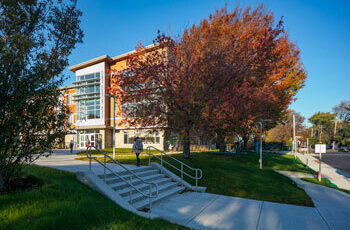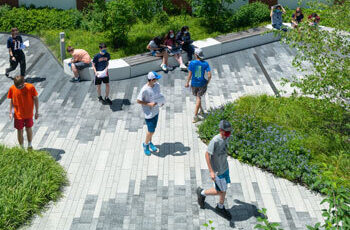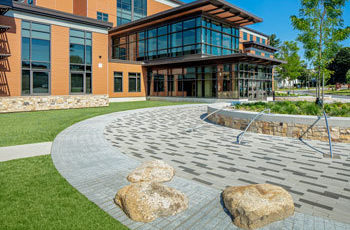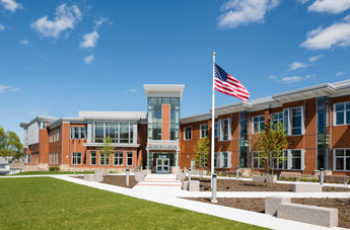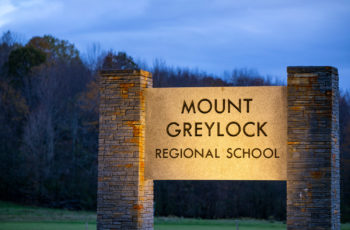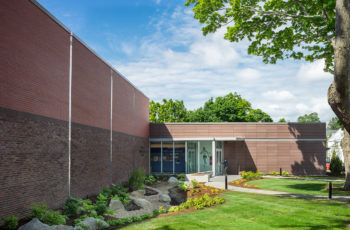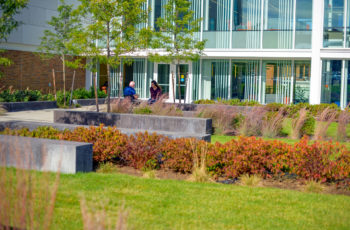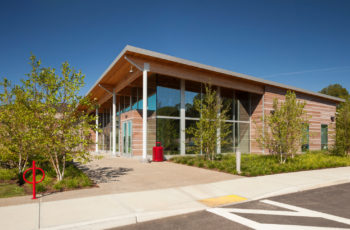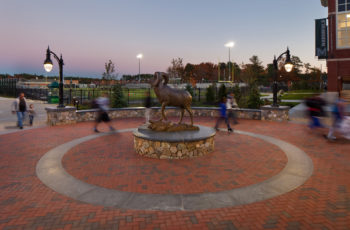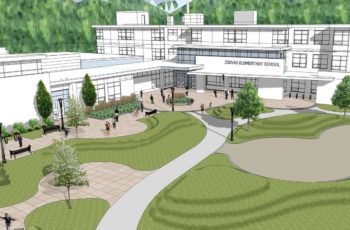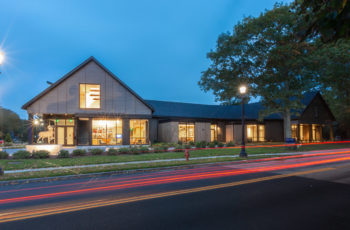Siting a New Neighborhood School
Barrington, RIOverview
While designing a building that meets the needs of 21st -century learners are a top priority, a secondary goal is to provide a safe and inspiring campus design that would encourage biking and walking to this neighborhood school.
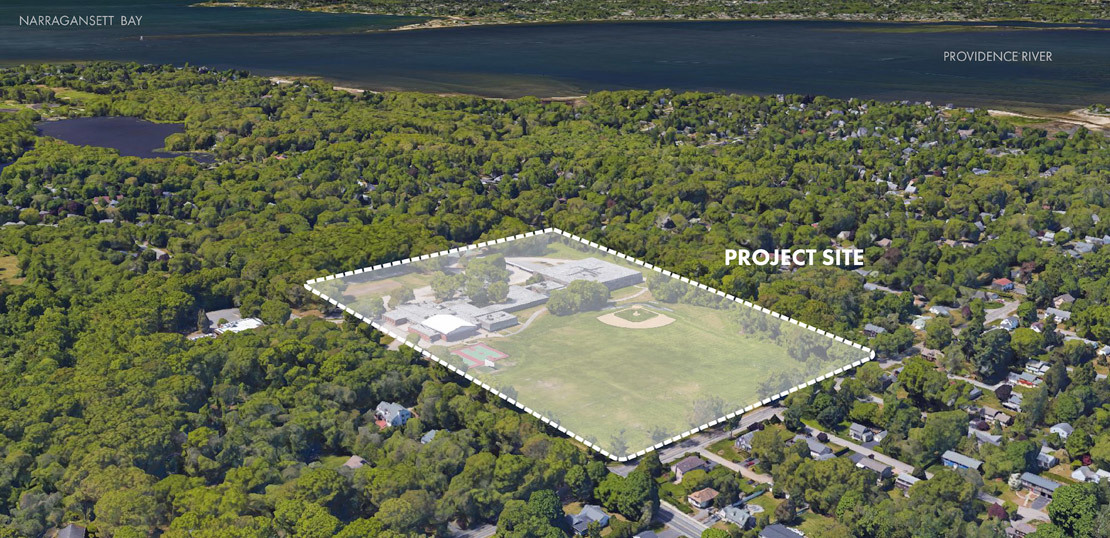
The Challenges
The approved site for the new construction was on the school’s existing athletic fields, surrounded by residential neighborhoods. In order to fit the structure on the small available footprint, the design incorporated a three-story classroom wing. This raised a couple of challenges:
- What was the best way to situate the building on the site so that it didn’t impose on the abutting neighbors?
- This neighborhood school is unique in that a majority of the student body walk or bike to school throughout the school year.
- At the existing site, bikes were overflowing the high-capacity bike racks, with additional bikes laying and resting up against the walls right outside the front doors.
- How do we continue this unique culture and enhance the safety and convenience?
Traverse Landscape Architects were tasked with helping to meet these challenges.
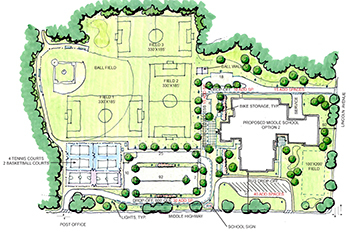
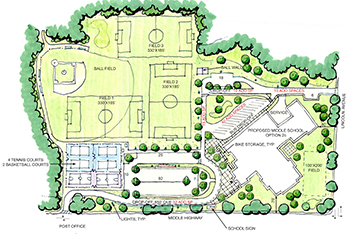
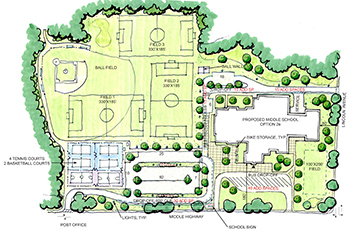
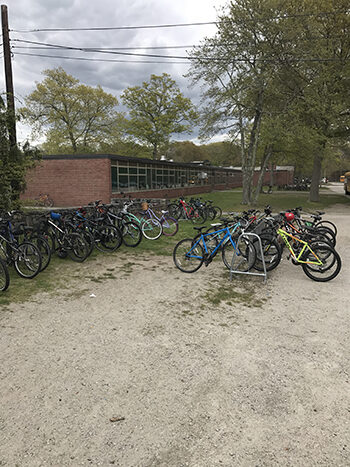
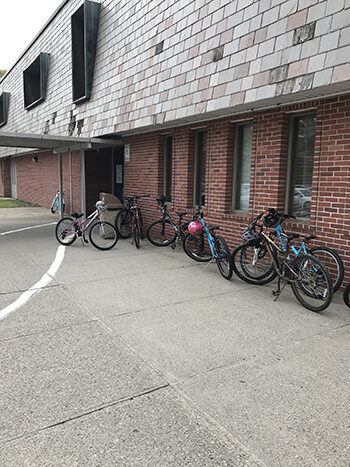
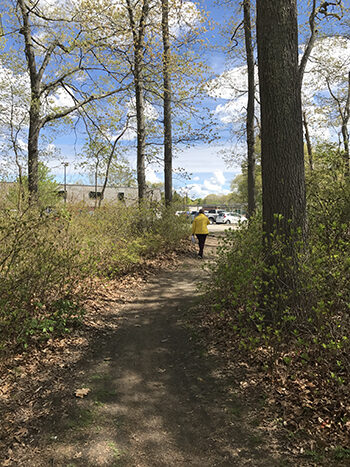
The Solutions
An important aspect of Traverse’s participatory design process is our willingness to engage with the community and school end-users—the students, faculty, and administration.
Addressing homeowner concerns
Homeowners were invited to meetings to express their ideas and concerns about the construction of the new school.
As a result, we worked with the design team to center the three-story massing closest to the center of the site, taking advantage of the natural buffers and allowing the one-story massing and new fields to be closer to the street and the neighboring properties. This layout was further developed and the building continued to change and evolve to a more compact form.
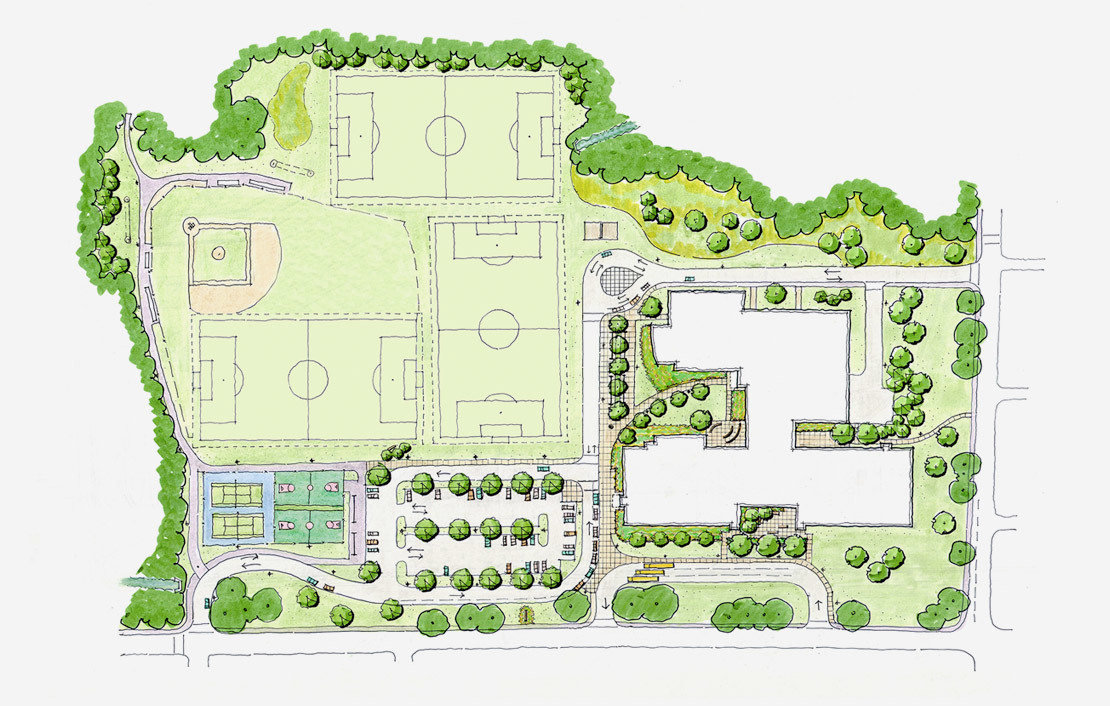
In addition to siting the building, Traverse prepared graphic diagrams to show how the project could be phased. This is a helpful tool in discussing how the project will be constructed.
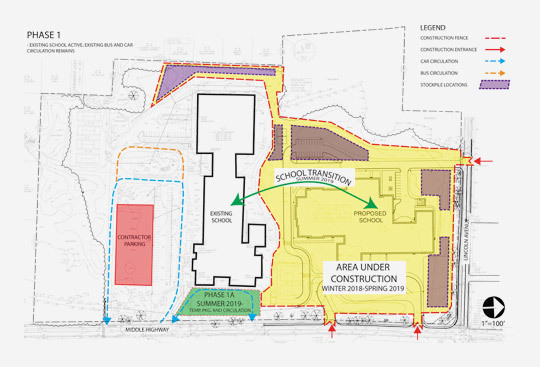
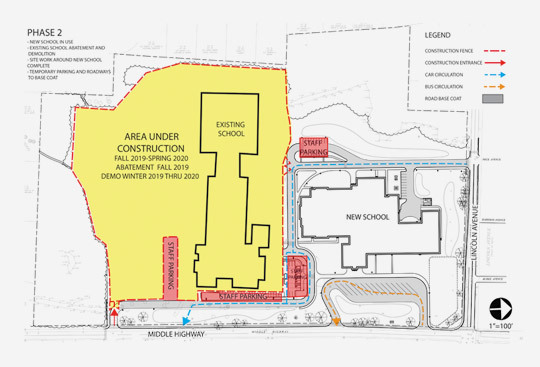
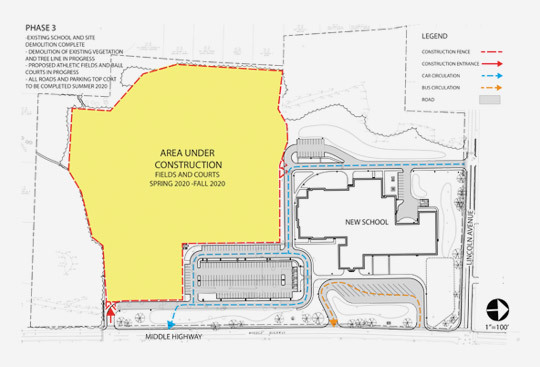
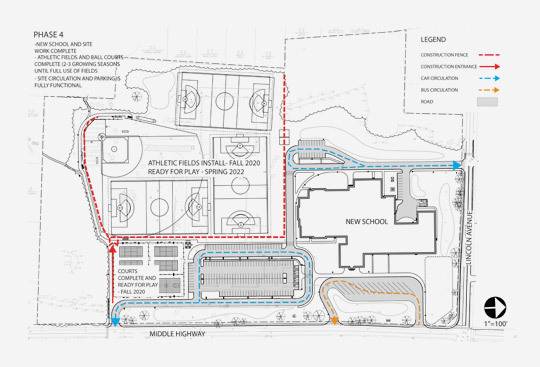
Understanding student/faculty/administration needs
Traverse invited students to participate in an on-line survey and over 600 responded to questions about walking and biking to and from school.
We also met with the students, faculty, and administration for a half-day session to present the site and landscape design concepts and obtain feedback on programming needs for outdoor learning areas, access, and circulation. These touch points are crucial to the ultimate site layout in meeting the needs of the students and faculty.
Understanding student circulation
In order to organize the site programming, Traverse created diagrams indicating the hierarchy of student circulation. We also created diagrams showing access to outdoor passive and active areas. These diagrams allow the client to understand aspects of the site development in a clear and organized fashion.
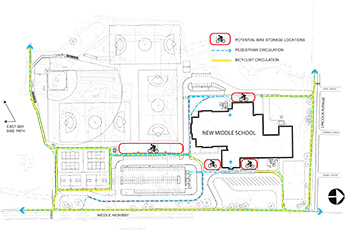
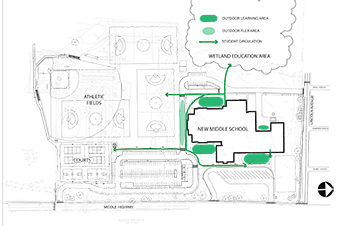
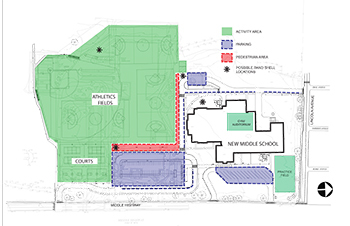
Traverse prepared renderings at the end of the Design Development Phase to illustrate the design intent to the Building Committee and the School Administration
Helping with budgeting and estimating
Once the building location was set, the design team prepared schematic design documents for estimating purposes. Traverse went through an extensive process to review two third-party estimates and worked with the estimators to help meet budget requirements established by the town. We prepared our own internal estimate for site and landscape related elements to keep track of costs.
Monitoring all aspects of site design
Traverse attended monthly building committee meetings to present and take comments on all aspects of the site design including grading and drainage, field layouts, student safety and circulation, vehicle circulation, and parking and outdoor learning areas.
The Result
Taxpayers approved the bond to enable the $68.4 million project to move forward in the Fall of 2016. The project construction document phase was completed in the fall of 2017, and the construction phase began in the spring of 2018. There are three phases to the project:
- Building a new school next to the existing one, scheduled to open in 2019;
- Transitioning the students to the new building;
- Demolishing the existing school and establishing athletic fields on the old building site.
